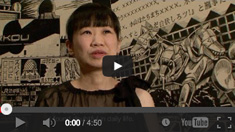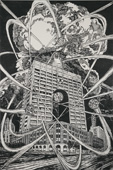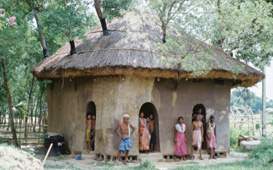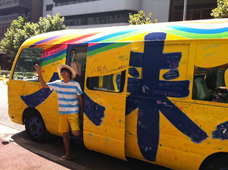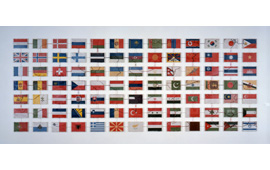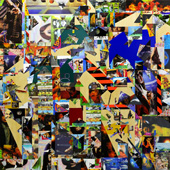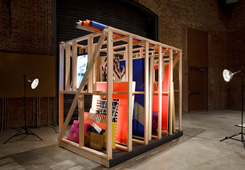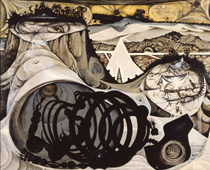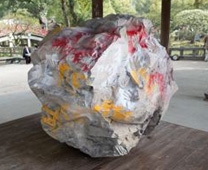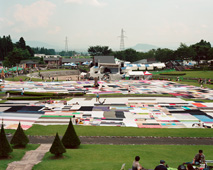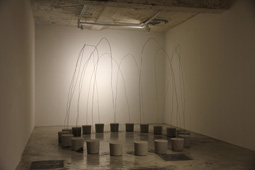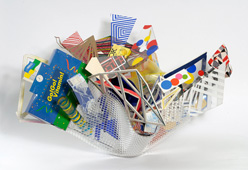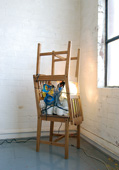Artists & Works
Artist Interview
Participating Artists [in alphabetical order of the artists’ (sur)names] [born / lives and works in]
|
|
Works
* Image referential only
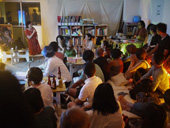
Event Image: AIT "Minglius Event"
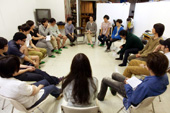
Event Image: blanClass 2013.6.1. [Student Night vol.9]
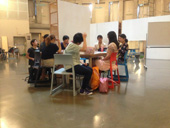
Event Image: CAMP "Simulation room #2"
Discursive Platform
Statements
Diverse initiatives for discussions are emerging around Japan. Examples include an NPO deploying innovative education systems, a group that has no fixed location but from time to time establishes opportunities for discourse, an organization that has its origins in a group that volunteered at triennales held since 2000, one established by individuals who moved from Tokyo after the Great East Japan Earthquake, and also examples like a shared house that is home to artists working in many different genres. In contrast to art spaces such as conventional art museums and galleries that concentrate on exhibiting or selling works of art, a young generation of artists and people in art community is creating these discursive platforms to explore new ways for art and society to relate to each other.
The event "Discursive Platform" is conceived as part of the program for "Roppongi Crossing 2013: OUT OF DOUBT." Instead of seeking the results of discourse, discussion and debate, it focuses on discossion as a process, considering it as creative expression in its own right, like that of the other works included in the exhibition. It is a platform for thinking about contemporary world together with people from different backgrounds, across generations. For this project we invited three groups that have been active in and around Tokyo since 2000—NPO Arts Initiative Tokyo [AIT], blanClass, and CAMP—to join Mori Art Museum in discourse. Together we have been repeatedly discussing on the subject of trends in contemporary art in Japan today. Over ten programs have emerged from our conversations, and each of these, including new programs as collaborative projects with the museum, has been based on the standard set by each of the groups in its activities to date. Content includes talking about issues peripheral to the production of art, such as inequality, labor, and gender. In addition, the planning team for "Discursive Platform" has investigated groups from around Japan that are putting unique, attractive ideas into practice from our own perspectives, and selected 29 examples of such groups with motivations and objectives that we can sympathize with. The list is of course incomplete. We are aware that there are many more groups in Japan, and indeed, around the world, that deserve to be introduced.
Through "Discursive Platform," we are not attempting to reach a single conclusion. Nevertheless, we have keen expectations that this event will help to reveal the diversity of issues facing Japan's art scene today.
| NPO Arts Initiative Tokyo [AIT], Horiuchi Naoko blanClass, Kobayashi Haruo CAMP, Inoue Fumio Public Programs, Mori Art Museum, Shiraki Eise, Mizuta Sayako |
NPO Arts Initiative Tokyo [AIT]
Since its establishment in 2002, AIT has been thinking about art programs and mechanisms that Tokyo should have, but that don't yet exist. MAD (Making Art Different) is a place for learning about contemporary art, which was unusual when first created. AIT's artist in residence program has brought many artists and curators to different locations to live and work for a certain period. Working internationally as well as around Japan, AIT has successfully created channels for knowledge and networking between its students and many artists and curators.
Our aim for participating in "Discursive Platform" is not simply to introduce grass-roots initiatives that turn a critical eye on society and artistic expression, or experimental education venues that are active around Japan. One of our most important objectives is to do some serious learning from each other. We want to consider the ideas and social background behind the birth of a new form of expression, without limiting that to physical works of art. By gazing carefully at the process of trial and error that makes such expressions take form, we hope that this will be an opportunity to discover new perspectives and a way of relating to art.
blanClass|Live Art & Archive
blanClass works out of a small space in a residential area of Yokohama. Activities include the "Live Art +public interview" session, one night intensive events where anything goes, series projects by Sugita Atsushi, CAMP, and Majima Tatsuo, and lectures and talk sessions. We explore alternative methods of archiving, including active use of social networks.
Gradually blanClass has become a place where artists from different generations could try out ideas that had not yet progressed as far as becoming works. What we share is not perfected solutions that could be called a "work." Instead, they are tools or opportunities needed for thinking, or perhaps they are some sorts of contrivance, which is unresolved and uncertain, but to discover something that is there for sure.
In order for art-related experiments and practice to work, it is best to take away any obstructions to freedom. Getting fixed on a particular idea is definitely the most powerful constraint, so it is vital to have schemes that consign format, genre, or pre-defined roles to oblivion, or that contrive to produce an additional choice.
Before any teaching, being taught, or learning takes place, you have to admit that there are a lot of things that you don't understand in this world. Nearly everything described in the history is like that, so things that are still happening are even more so. I once thought that being able to handle anything that you came across without hesitation had the potential to be the "Next Education." Could that sort of activity be described as "discursive"?
CAMP
To be honest, I don't yet really know what would be interesting to do for "Discursive Platform," so to think about it, I will write about what CAMP would like to do. What CAMP would like to do is hold a full and frank discussion about art and society, politics, economics, or everyday life with people who work in art museums. Based on those discussions, we would think about "Discursive Platform" once again, together with all sorts of people who have an interest in art, not just art museum people. This may all require some time. (It will probably still be going on when Roppongi Crossing 2013 is finished.) It will not be an efficient process, and there may not be any clear outcome from it. Even so, CAMP believes that it's important to exchange opinions and ideas about, talk about, and think about something we don't understand well.
Programs * in Japanese-language only
10-something programs born as a result of discussions are to be held in and out of the Mori Art Museum throughout the "Roppongi Crossing 2013" exhibition period. These include new collaboration programs with the Mori Art Museum, based on each group's activities to date, and the subject matter would also extend to issues that surround the artistic production such as "disparity," "labor," "gender" and so on.
Schedule of the programs here
Please see the Japanese event webpage for details.
"Discursive Platform" around Japan
The planning team for "Discursive Platform" has investigated groups from around Japan that are putting unique, attractive ideas into practice from our own perspectives, and selected 29 examples of such groups with motivations and objectives that we can sympathize with.
- Antenna Media
- NPO art & river bank
- ARTISTS' GUILD
- Arts Audience Tables loplop
- B&B
- blanClass
- CAMP
- comos-tv
- Compass
- CSLAB (Creative Spiral Laboratory)
- Social Kitchen
- KAMO/Konohana Arts Meeting for Osaka
- N-mark
- parlwr
- r:ead (Residency East Asia Dialogue)
- remo / NPO record, expression and medium-organization
- The Academy of Alter-Globalization
- NPO Arts Initiative Tokyo [AIT]
- Arts NPO Link
- Kabegiwa
- Kiso Geijutsu - Contemporary Art Think-tank
- Art-coefficient
- Tanaka Koki: podcast program "Dialogues" | "Correspondences"
- Shibuhouse
- Whole / Hole / Hall
- Tami
- Higashiyama Artists Placement Service
- Bigakko
- birdo flugas





